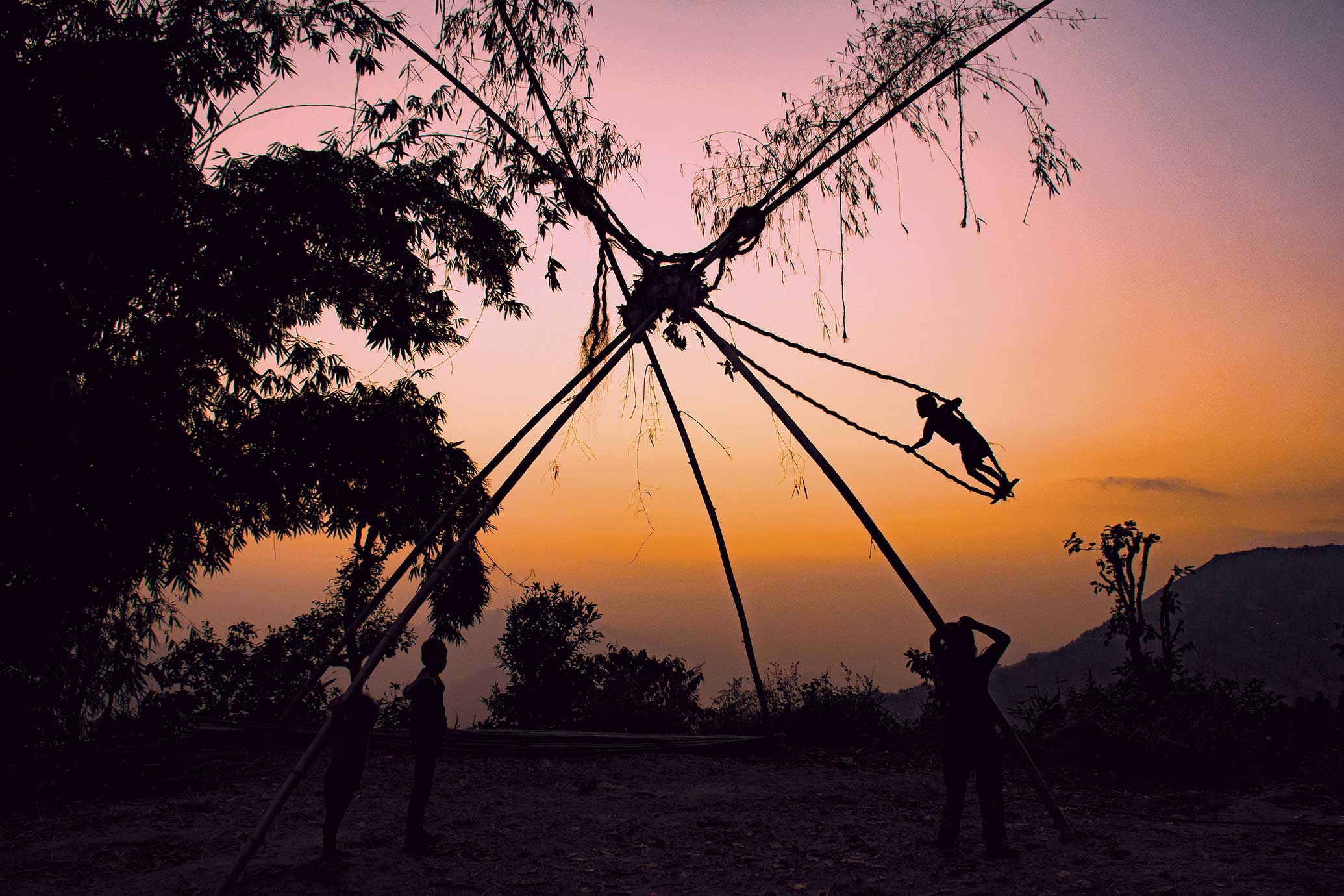A simple head accessory worn while performing certain rituals proves yet again, how the simplest detail of Nepali life is full of meaning.
 There is a lot about Nepali culture and its various rites and rituals that those foreign to the land and its customs might deem as strange and impractical. They will not be completely wrong in thinking this. While the practicality of these traditions is a subjective matter, many of the rituals are a bit strange. Many times, people might not even know the significance of the rituals they are performing. Many people grow up watching their traditions in practice and it becomes such a part of their daily lives that it is as exotic to them as washing one’s face in the morning.
There is a lot about Nepali culture and its various rites and rituals that those foreign to the land and its customs might deem as strange and impractical. They will not be completely wrong in thinking this. While the practicality of these traditions is a subjective matter, many of the rituals are a bit strange. Many times, people might not even know the significance of the rituals they are performing. Many people grow up watching their traditions in practice and it becomes such a part of their daily lives that it is as exotic to them as washing one’s face in the morning.
This has happened to some parts of Nepali culture due to an absence of research on the topic and the subsequently poor state of its preservation. Naturally, people would be unaware of the meanings of the little things they do during various festivals. However, if one were to get slightly more inquisitive and ask around about such traditions, pockets of people who know about this still exist, shedding light on these charming little everyday mysteries.
Bel Bibaha is the custom of marrying a young girl to a bel fruit. Although it is largely symbolic, with the fruit representing an immortal husband, it is an important rite of passage for a young Hindu girl. The bel bibaha is in fact one of three types of marriages which a Hindu girl will probably experience in her lifetime. The second marriage is to the sun god or Surya. Only the third is to an actual human! The tradition ensures that the girl is never widowed. Janku is another tradition where upon reaching the age of 77 years, seven months and seven weeks, an elderly person gets the status of a living god or goddess. The second janku takes place when the person reaches 88 years, eight months and eight weeks of age.
The Mohkee is a traditional Newari ornament - if you consider a painting on paper one, worn by young girls or elderly women during bel bibaha or janku. An accessory to be worn on the head, its front side is arranged on a girl’s forehead so that the most prominent motifs on it, the Ashtamangala are clearly visible. Ashtamangala comes from two Sanskrit words – ashta meaning eight and mangala meaning auspicious. Together they represent eight auspicious Buddhist symbols.
These symbols are revered and held with great respect by its followers, with meanings that have significance to every Buddhist. These symbols are - the Endless Knot, the Golden Fish, the Lotus, the Om Mani Padme Hum, the Parasol, the Swastika, the Triratna and the Varada Mudra. The symbols are especially important in countries that practice the Theravada sect of Buddhism such as Sri Lanka and Thailand. Over time, the different cultures of the various areas it spread to added to the symbolism continually and made it richer.
The symbols represent eight of the teachings of the Buddha. This makes it quite clear, as to why this design is on the mohkee in the first place. In marriage and when being designated a living goddess, these teachings of the Buddha are to act as guidelines. Another mystery solved, in the series of such that makes up Nepali life.
Bel Bibaha is the custom of marrying a young girl to a bel fruit. Although it is largely symbolic, with the fruit representing an immortal husband, it is an important rite of passage for a young Hindu girl.










